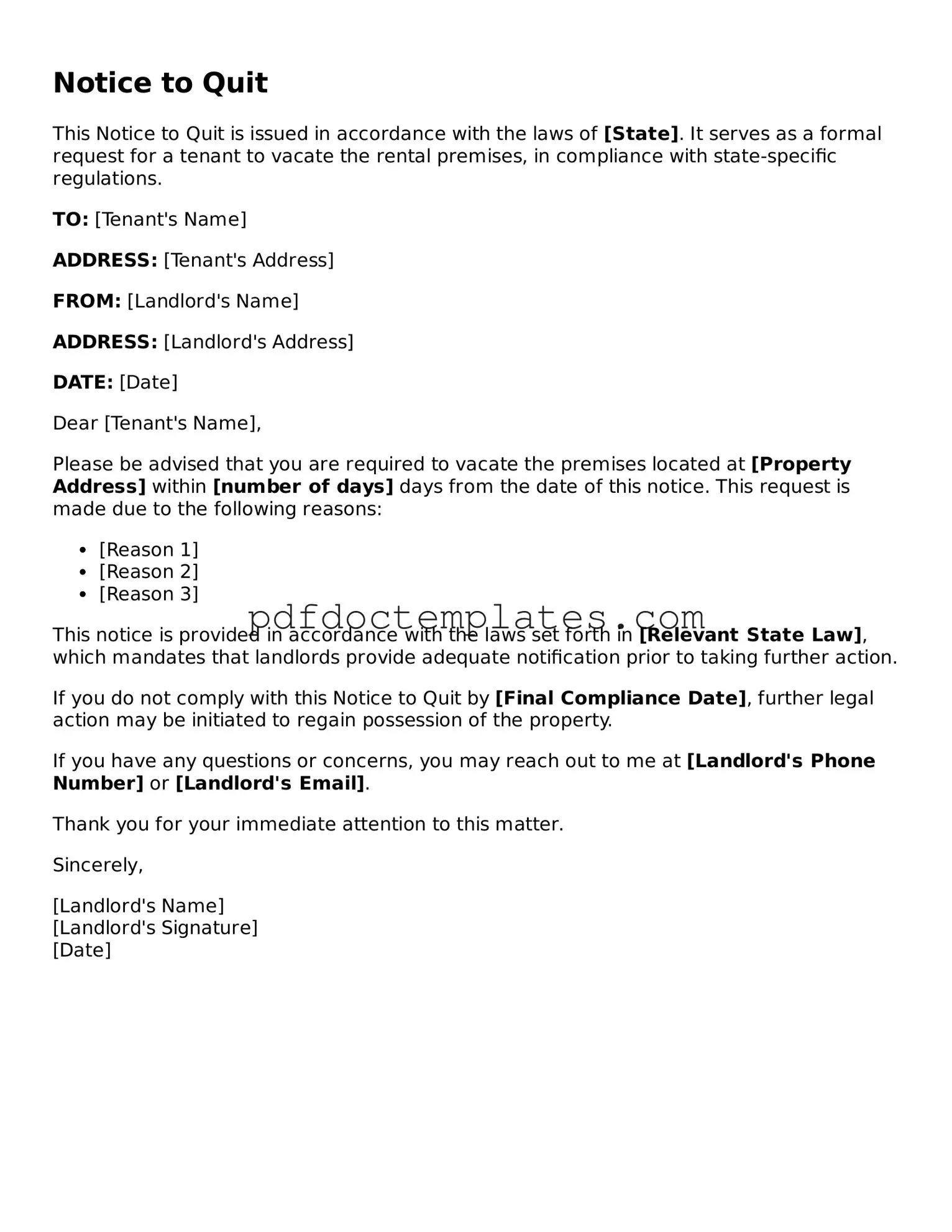Notice to Quit
This Notice to Quit is issued in accordance with the laws of [State]. It serves as a formal request for a tenant to vacate the rental premises, in compliance with state-specific regulations.
TO: [Tenant's Name]
ADDRESS: [Tenant's Address]
FROM: [Landlord's Name]
ADDRESS: [Landlord's Address]
DATE: [Date]
Dear [Tenant's Name],
Please be advised that you are required to vacate the premises located at [Property Address] within [number of days] days from the date of this notice. This request is made due to the following reasons:
- [Reason 1]
- [Reason 2]
- [Reason 3]
This notice is provided in accordance with the laws set forth in [Relevant State Law], which mandates that landlords provide adequate notification prior to taking further action.
If you do not comply with this Notice to Quit by [Final Compliance Date], further legal action may be initiated to regain possession of the property.
If you have any questions or concerns, you may reach out to me at [Landlord's Phone Number] or [Landlord's Email].
Thank you for your immediate attention to this matter.
Sincerely,
[Landlord's Name]
[Landlord's Signature]
[Date]
